Steps for Creating Custom Cardiovascular Health Plans

Unlocking the Path to Tailored Cardiovascular Care
Creating effective, personalized cardiovascular health plans involves a multidimensional approach that integrates advanced diagnostics, skilled healthcare teams, patient engagement, and innovative models of care delivery. This comprehensive guide explores the key steps and best practices crucial for developing customized strategies that address individual risk factors and optimize outcomes.
Assessing Individual Risk Factors Using Advanced Technologies
What are the key steps involved in designing a personalized cardiovascular health plan?
Designing a tailored approach to cardiovascular health involves several crucial steps rooted in advanced scientific methods. Initially, clinicians conduct thorough risk assessments using molecular diagnostics and biomarkers, which reveal specific genetic, epigenetic, and biochemical factors that influence an individual's disease risk.
Technologies like genomics and proteomics offer a detailed understanding of genetic predispositions and protein expressions linked to cardiovascular conditions. These data, combined with comprehensive health information, are integrated through systems biology modeling. This approach helps in visualizing complex interactions among multiple risk factors, enabling accurate risk stratification.
Once risks are identified, healthcare providers develop personalized therapy strategies. This can include medications, surgical options, or lifestyle modifications, all tailored to the patient’s unique genetic makeup, environmental exposures, and social context. Engaging patients in shared decision-making ensures that chosen interventions align with personal preferences and life circumstances.
Advanced decision-support tools such as fuzzy Petri nets and reasoning algorithms analyze large datasets, providing nuanced recommendations. These insights help in setting specific, measurable goals and in designing flexible, adaptive plans that can be monitored and adjusted over time.
Continuous follow-up with real-time data collection — through wearable devices or regular testing — allows the care team to modify interventions as needed. This dynamic process ensures optimal outcomes, addressing evolving health statuses, environmental changes, and social factors to maintain effective cardiovascular management.
Building Multidisciplinary Care Teams for Effective Strategy Development
How can healthcare teams effectively coordinate to develop tailored cardiovascular care strategies?
Developing personalized cardiovascular care strategies requires a well-structured, multidisciplinary team that works seamlessly together. An effective team includes diverse professionals such as cardiologists, primary care physicians, nurses, pharmacists, social workers, and other specialists. Each member brings unique expertise to address the complex needs of cardiovascular patients.
Coordination begins with clear communication of objectives and responsibilities. Defining specific roles ensures that each team member operates at the top of their license—managing tasks like medication adjustments, diagnostic assessments, or patient education. Establishing shared goals helps align everyone’s efforts towards improving patient outcomes.
A key component is creating a longitudinal care model, where the team maintains ongoing engagement with the patient through continuous monitoring and follow-up. This model supports consistent care delivery, quick identification of issues, and timely interventions.
Team engagement and empowerment are crucial for success. Regular team meetings, shared electronic health records, and collaborative decision-making foster mutual respect and trust. Engaging patients and their families in the process ensures that care plans reflect their preferences and social circumstances, making strategies more effective.
Leveraging technology like health information systems facilitates data sharing, care coordination, and real-time updates. By adopting these strategies, healthcare teams can craft individualized, holistic care plans that adapt to each patient's evolving needs, ultimately improving outcomes and reducing disparities in cardiovascular health.
Designing Tailored Interventions Through Risk Stratification and Data Integration
What are the practices involved in developing personalized heart health plans?
Developing individualized heart health plans begins with comprehensive risk assessments that go beyond traditional factors like age, cholesterol, and blood pressure. Incorporating advanced tools such as genetic testing, biomarkers, and imaging techniques enables precise risk stratification for each patient.
Biomarkers, including lipid profiles and emerging molecular indicators, serve as important signals that can indicate early disease processes or treatment responsiveness. Genetic testing provides insights into inherited risk factors, guiding tailored interventions and medication choices.
Imaging modalities like coronary artery calcium scans help detect early signs of coronary disease, facilitating timely and targeted strategies.
Personalized therapy involves integrating these diagnostic insights with patient preferences, social determinants of health, and lifestyle factors. Shared decision-making ensures interventions such as diet modifications, physical activity, smoking cessation, or stress management align with individual circumstances.
Advanced technologies like AI and remote monitoring platforms support continuous assessment and adaptation of treatment plans, ensuring they remain relevant and effective.
A multidisciplinary team—comprising cardiologists, genetic counselors, nutritionists, and health coaches—collaborates to design and implement these plans.
Continuous monitoring with metric-based outcomes and patient self-assessment tools allows for ongoing adjustments, promoting an adaptive, patient-centered approach.
Leveraging community resources and digital health solutions enhances access and adherence, addressing social and behavioral factors influencing cardiovascular health.
Overall, this integrated and dynamic approach ensures that cardiovascular care is tailored, equitable, and adaptable to each patient's evolving needs.
Leveraging Data and Modeling for Precision Cardiovascular Care
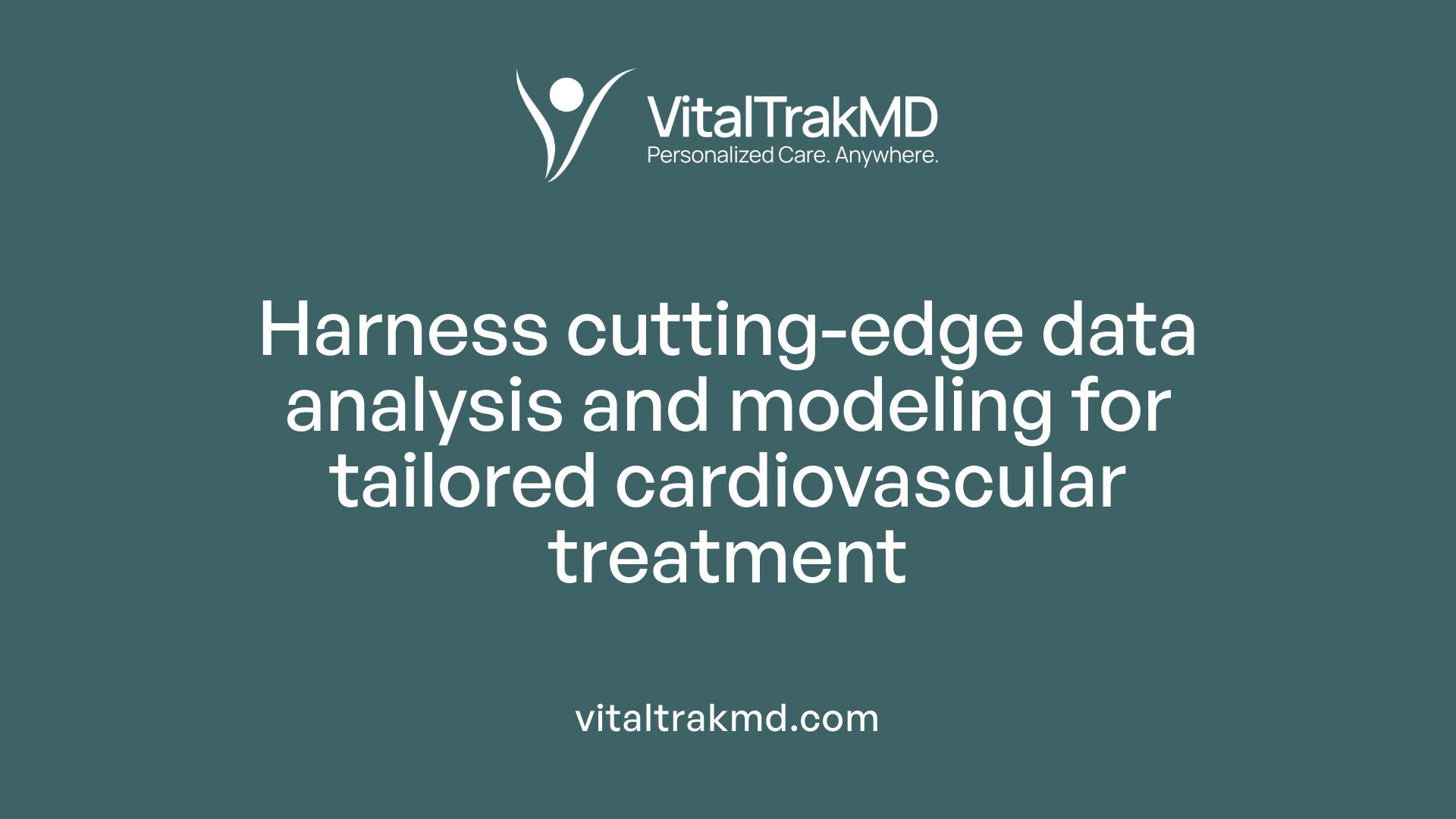
How can data and modeling be used to personalize cardiovascular health strategies?
Integrating advanced data analysis and modeling techniques is revolutionizing personalized care in cardiology. One of the most promising tools is digital twin technology, which creates detailed virtual replicas of individual patients. These models incorporate diverse information such as genetic profiles, medical imaging, physiological data, and environmental factors.
Digital twins enable precise risk evaluation and allow clinicians to simulate how various treatments might affect a patient before actual intervention. This predictive capability supports the development of tailored treatment plans that align with each person’s unique health profile, improving efficacy and minimizing risks.
Machine learning (ML) and artificial intelligence (AI) algorithms are also instrumental in this transformation. They analyze vast, complex datasets to identify patterns and predict disease progression more accurately than traditional methods. These insights help in early detection of cardiovascular problems, optimizing therapeutic choices, and assessing the potential outcomes of different interventions.
Data integration from multiple sources—including genomics, proteomics, clinical records, and lifestyle information—enhances risk stratification. It allows healthcare providers to identify at-risk populations more effectively and address health disparities by customizing interventions.
Overall, these technological advancements foster a shift from generic treatment approaches to highly targeted, data-driven strategies. They enable clinicians to deliver personalized cardiovascular care that is more precise, efficient, and effective, ultimately leading to better patient outcomes.
The Role of Patient Engagement and Shared Decision-Making
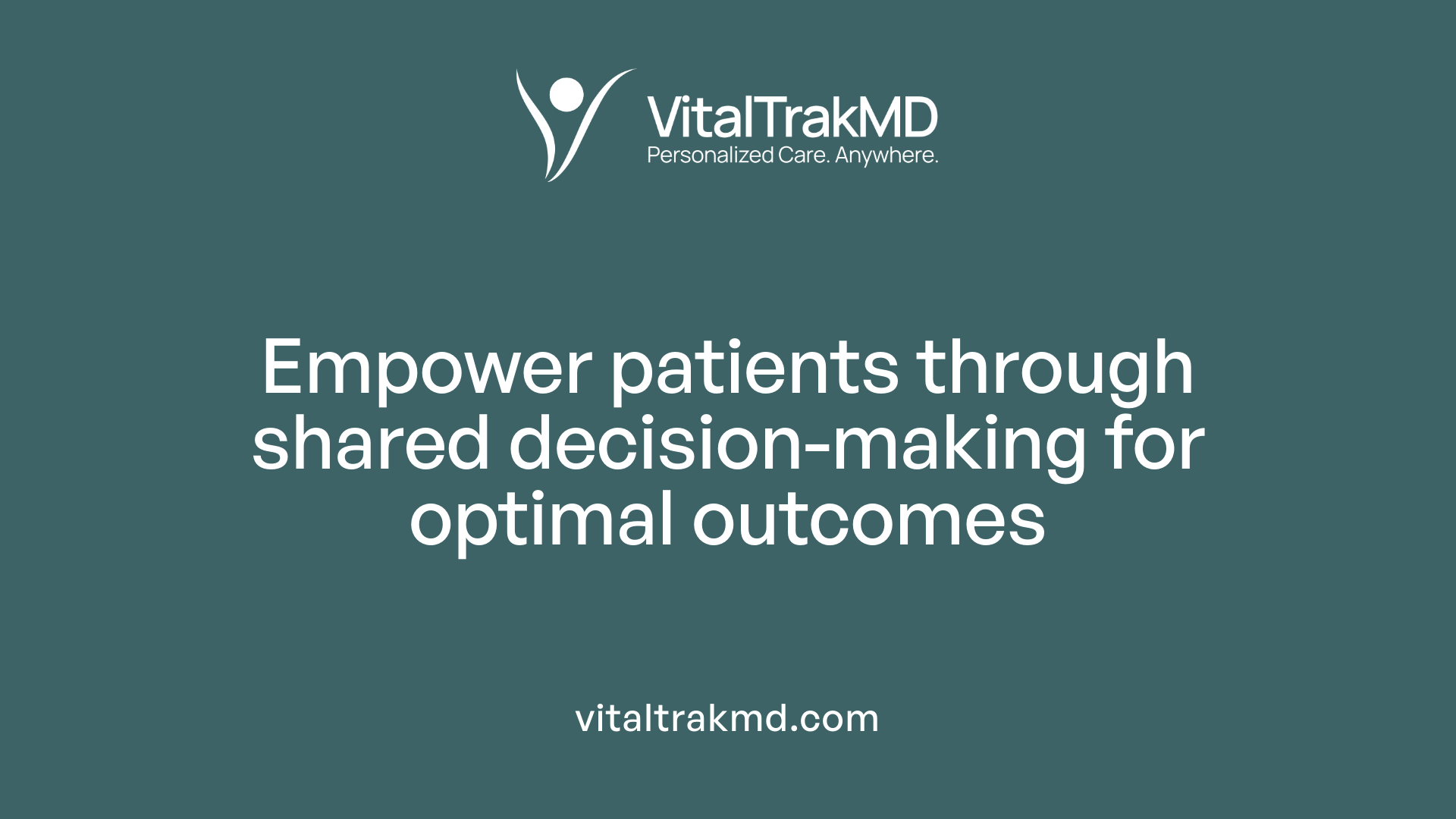
What role does patient engagement and shared decision-making play in developing effective cardiovascular health plans?
Patient involvement is essential for tailoring cardiovascular health strategies to individual needs. When patients actively participate in their care, they are more likely to adhere to prescribed treatments and make meaningful lifestyle changes.
Shared decision-making (SDM) is a collaborative approach where healthcare providers and patients work together to choose suitable tests, treatments, and health goals. This process respects patient preferences and provides them with clear, evidence-based information about their options.
Tools like decision aids, visual explanations, and digital health applications enhance SDM by making complex information more understandable. These resources help patients compare options, understand risks and benefits, and express their values effectively.
Research shows that involving patients in decision-making improves clinical outcomes, enhances satisfaction with care, and promotes better management of cardiovascular risk factors such as hypertension, hypercholesterolemia, and diabetes.
Incorporating structured tools, including patient-reported outcomes and interactive technology, encourages active participation. This collaborative approach results in more personalized and effective health plans, leading to improved disease control and reduced complications.
Overall, engaging patients and fostering shared decision-making transform cardiovascular care into a more responsive, respectful, and successful process, ultimately improving long-term health outcomes.
Developing Organizational Frameworks and Structured Care Pathways
How can healthcare systems develop organizational frameworks and structured pathways to improve cardiovascular care delivery?
Healthcare systems can enhance cardiovascular care by building comprehensive organizational frameworks that support coordinated and effective delivery of services. These frameworks involve establishing specialized, multidisciplinary service lines that bring together cardiologists, nurses, pharmacists, and other healthcare professionals working collaboratively.
Implementing standardized care pathways and protocols tailored to specific conditions—such as hypertension, heart failure, and atrial fibrillation—ensures consistency and quality in patient management. These pathways include community-based programs, transitional care models that support patients moving from hospital to home, and home-visit initiatives to reach underserved populations.
Technology plays a vital role in these frameworks. Real-time data collection and analysis facilitate continuous performance monitoring, allowing healthcare providers to track outcomes, identify gaps, and adjust strategies promptly. Tools like electronic health records and health informatics systems support this data-driven approach.
Strong governance structures with clear leadership—such as physician-administrator pairs—are essential for strategic planning, accountability, and quality improvement. These leaders oversee system-wide initiatives, ensuring that policies align with clinical best practices and organizational goals.
Equally important is the emphasis on health equity and community engagement. Programs that address social determinants of health, culturally tailored interventions, and active involvement of community stakeholders help reduce disparities and improve access to care.
By integrating these components—including standardized pathways, advanced data systems, strong leadership, and community involvement—healthcare systems can create person-centered, efficient, and equitable frameworks destined to improve cardiovascular outcomes across diverse populations.
Innovative Payment Models and Delivery Approaches for Personalized Care
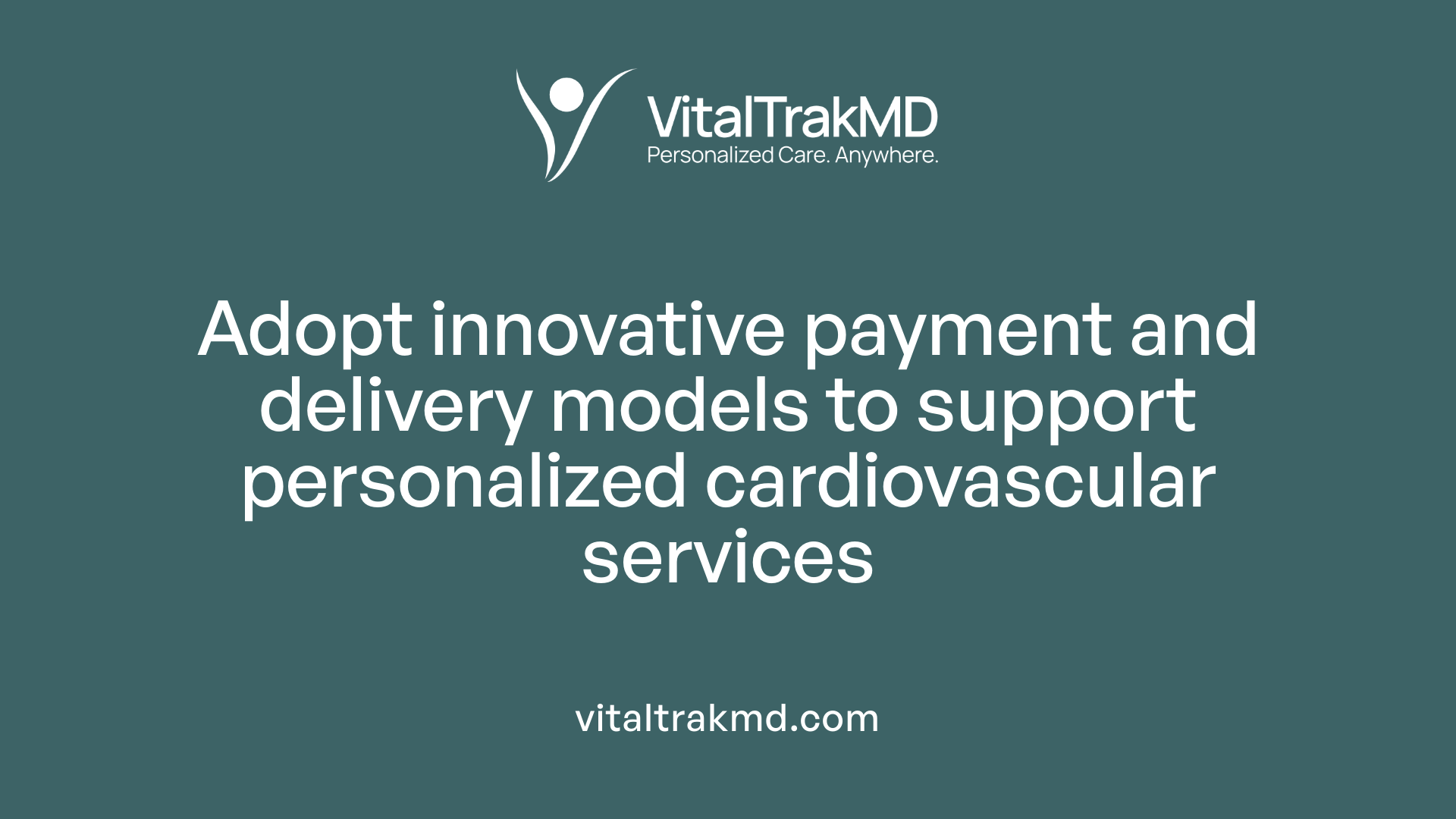
What innovative payment models and healthcare delivery approaches support personalized cardiovascular care?
To advance personalized heart health management, new payment models and care delivery strategies have gained prominence. These models are designed to align financial incentives with patient-centered outcomes, improving both quality and efficiency.
One leading approach is value-based care, which rewards healthcare providers based on the quality and effectiveness of care rather than volume of services. This encourages integrated, outcome-focused treatment plans that are especially beneficial for complex cardiovascular conditions.
Accountable Care Organizations (ACOs) are another example, where a network of providers collaborates to coordinate care for a patient population, sharing risks and rewards. This model emphasizes preventive care, early intervention, and chronic disease management.
Bundled payments are targeted at specific cardiovascular episodes, such as heart surgery or a stroke rehabilitation period. Instead of paying for each service separately, payers provide a single payment covering the entire care episode, incentivizing providers to deliver efficient, high-quality care.
Advanced primary care models focus on long-term, comprehensive management, emphasizing preventive services, addressing social determinants of health, and reducing disparities. These models support a holistic approach that can be tailored to individual patient needs.
Technology integration also plays a crucial role. Telemedicine, remote monitoring, and digital health tools enable continuous, personalized engagement beyond traditional settings, facilitating timely interventions and lifestyle modifications.
Furthermore, multi-payer alignment and performance-based contracts foster innovation by encouraging providers and payers to work together towards shared health outcomes. Rewarding improved clinical results and cost reductions ultimately supports tailored care.
Summary table of approaches:
| Model / Approach | Focus Area | How It Supports Personalization |
|---|---|---|
| Value-based care | Quality and outcomes | Prioritizes effective, patient-centered interventions |
| ACOs | Population management | Promotes coordinated, comprehensive treatment plans |
| Bundled payments | Specific care episodes | Encourages efficiency and care integration |
| Advanced primary care | Holistic long-term management | Addresses social and behavioral factors impacting health |
| Telemedicine & digital tools | Remote monitoring and engagement | Enables real-time, personalized patient interactions |
Together, these models aim to transform cardiovascular healthcare. They create a system where personalized, efficient, and equitable care is the standard, with financial structures supporting innovative, patient-centered approaches.
For further insights, searching 'innovative payment models in cardiovascular care' provides extensive current examples and case studies.
Addressing Individual Risk Factors and Population-Level Strategies
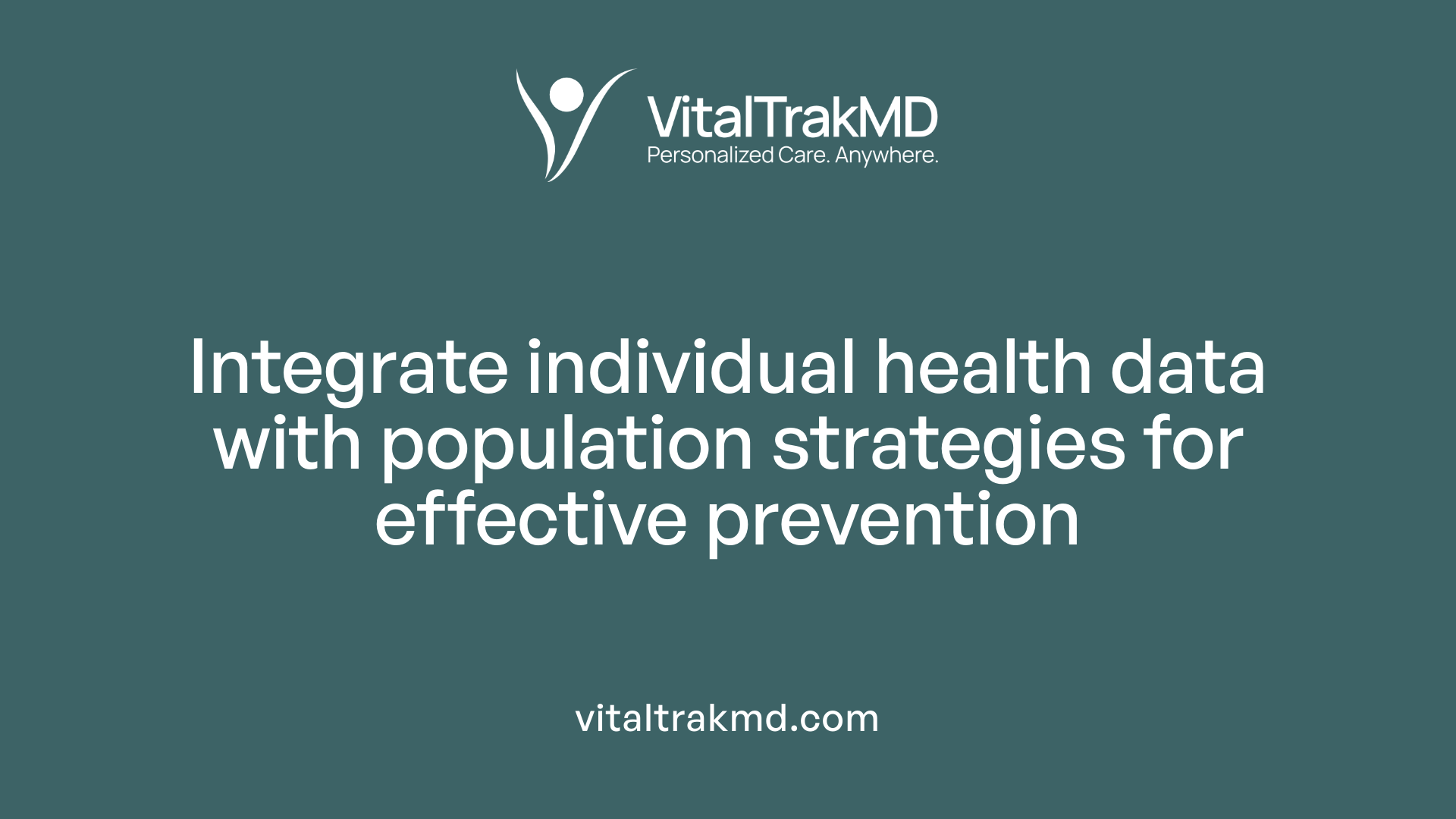
How should individual risk factors and health data be addressed to tailor cardiovascular interventions?
Personalized management of cardiovascular disorders relies on a detailed understanding of each patient’s unique health data. Clinicians begin with comprehensive risk assessments using validated tools like the Framingham risk score or the ASCVD calculator. These tools incorporate modifiable factors such as blood pressure, cholesterol levels, smoking status, diet, and physical activity, alongside nonmodifiable elements like age, genetics, and family history.
In addition to traditional risk factors, emerging biomarkers are gaining importance for refining risk stratification. Tests measuring coronary artery calcium scores, C-reactive protein (CRP), lipoprotein(a), and genetic predispositions provide deeper insights into individual risk profiles, enabling more precise targeting of preventive measures.
Tailoring interventions involves focusing on modifiable lifestyle factors. Patients are encouraged to adopt dietary patterns like the Mediterranean diet, increase physical activity, improve sleep hygiene, and pursue smoking cessation. These strategies are customized based on the patient’s specific risk factors and preferences.
Technological innovations greatly enhance risk management. Wearable devices track physical activity and vital signs in real-time, electronic health records integrate diverse health data streams, and artificial intelligence (AI) algorithms analyze complex datasets to predict and monitor cardiovascular risk dynamically.
By integrating comprehensive health information with individualized risk profiles, healthcare providers can develop targeted prevention strategies. Such personalized approaches not only aim to reduce the incidence of cardiovascular disease but also improve long-term health outcomes, ensuring interventions are both effective and sustainable.
Strategies for Preventive and Risk Management in Cardiovascular Health
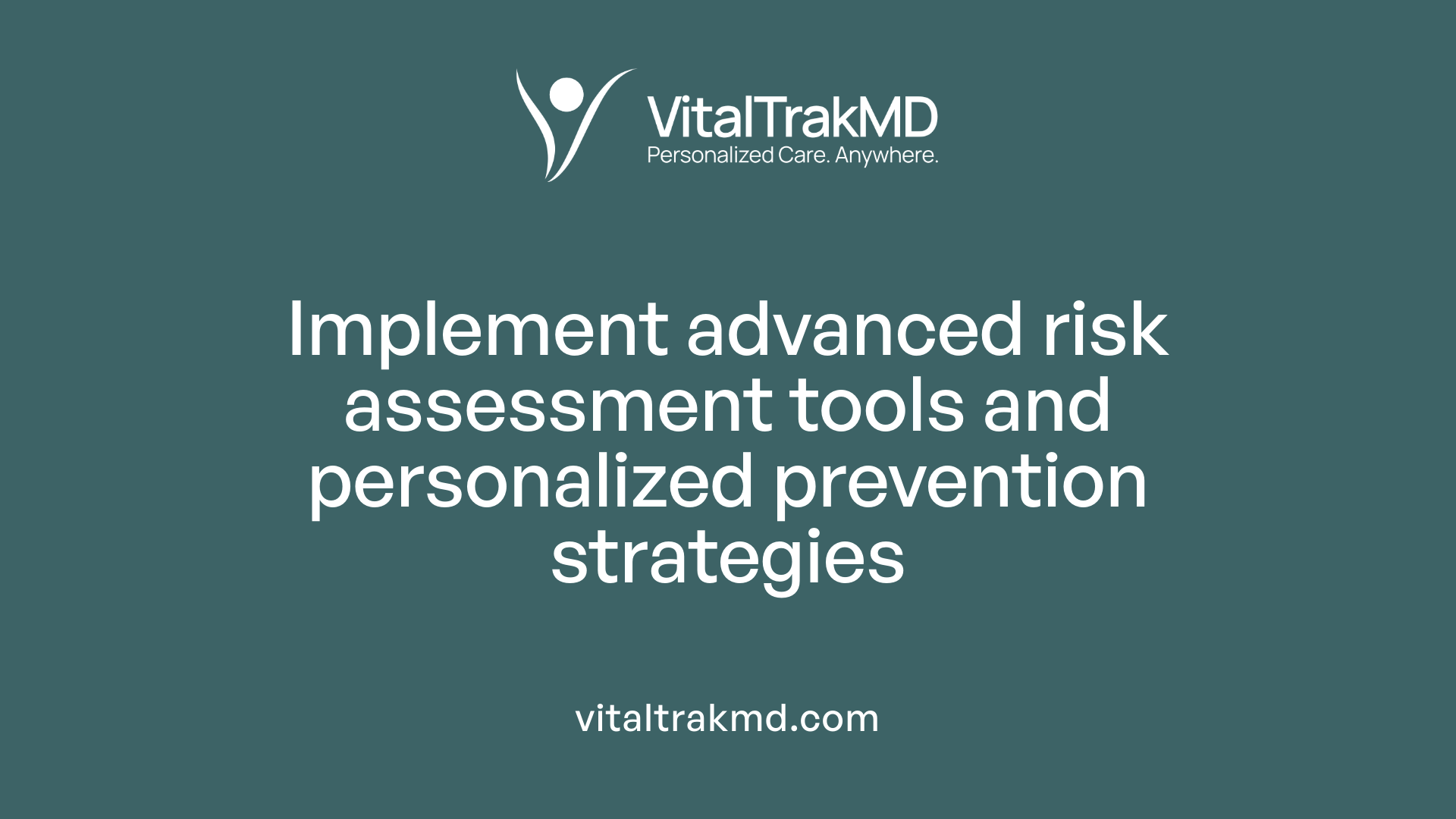
What strategies can be employed to develop preventive and risk management approaches within cardiovascular health planning?
Developing effective prevention and risk management strategies in cardiovascular health involves a multifaceted approach. Firstly, refined risk assessment tools are crucial. Traditional risk scores are complemented by emerging biomarkers such as lipoprotein-associated phospholipase A2, microRNAs, and metabolomics, allowing for more precise identification of at-risk individuals.
Lifestyle modifications play a vital role. Dietary interventions, like increasing sulforaphane-rich foods (found in vegetables like broccoli), can help reduce oxidative stress and inflammation. Promoting early screening for conditions such as obstructive sleep apnea and hypertension ensures timely intervention before progression to more severe disease.
Personalized medicine approaches further enhance prevention efforts. Systems biology and network medicine enable clinicians to understand individual disease mechanisms, leading to targeted interventions.
Digital health programs, exemplified by initiatives like VIVOPTIM, demonstrate the benefits of personalized risk management through electronic health records, lifestyle tracking, and tailored counseling.
Public health strategies are also integral. Education campaigns tailored to specific populations, behavioral change initiatives, and community-based screening programs facilitate early detection and lifestyle adjustments.
Combining these methods—advanced risk diagnostics, personalized interventions, lifestyle changes, and community initiatives—creates a comprehensive framework. Leveraging technological innovations and fostering cross-sector knowledge exchange ensures these strategies are dynamic and adaptable.
Ultimately, integrating predictive, preventive, and personalized strategies will lead to better management of cardiovascular risk, improving outcomes at both the individual and population levels.
Towards a Future of Personalized Cardiovascular Care
Developing personalized cardiovascular health plans is a multifaceted process that requires integrating advanced diagnostics, fostering collaborative care teams, leveraging innovative data modeling, engaging patients actively, and employing innovative healthcare delivery and payment models. Embracing these principles will enable clinicians and healthcare systems to design tailored interventions that address individual risk factors comprehensively, improve outcomes, and ensure equitable access to high-quality care. As technology evolves and our understanding of cardiovascular biology deepens, these strategies will become more precise and accessible, ultimately transforming the landscape of heart disease prevention and management into a highly personalized journey for every patient.
References
- Personalized Management of Cardiovascular Disorders - PMC
- Designing plans to manage comorbid conditions
- How to build a cardiovascular care team from the ground up
- [PDF] Improving Heart Health Through Value-Based Payment
- Tailoring Health Insurance Plans to Client Needs - CrankWheel
- Personalized Health Planning in Primary Care Settings - PMC
- Creating a Care Team - Cardiac Interventions Today
- Shared Decision-Making and Cardiovascular Health - AHA Journals
Recent articles
Want to Feel Better and Live Healthier?
Join hundreds of patients taking control of their health with personalized care that fits their life – not the other way around.
Rated 4.8/5 by 32+ customers







